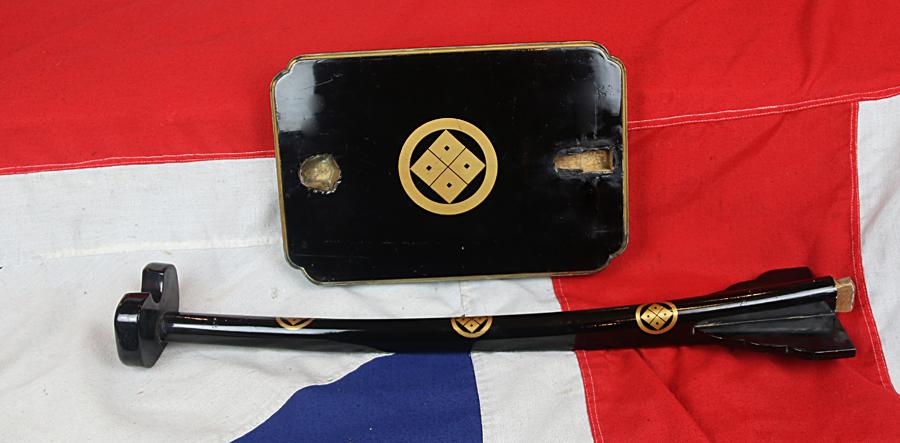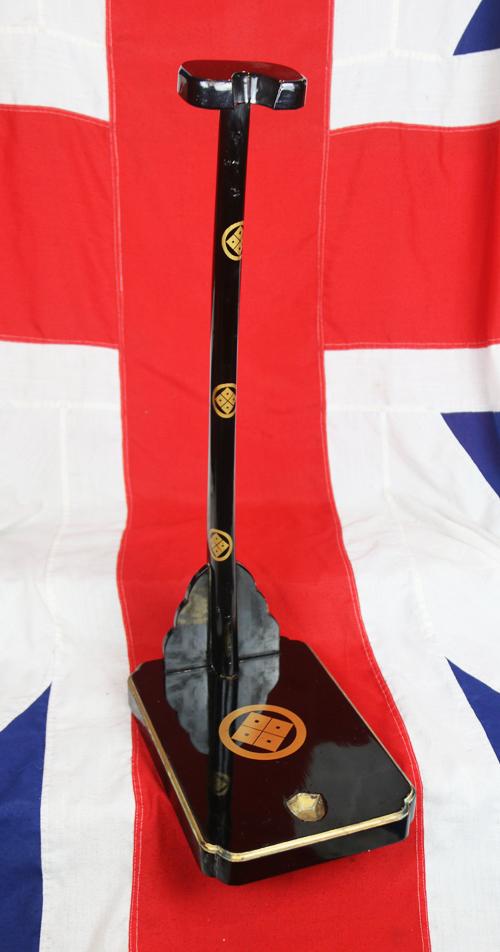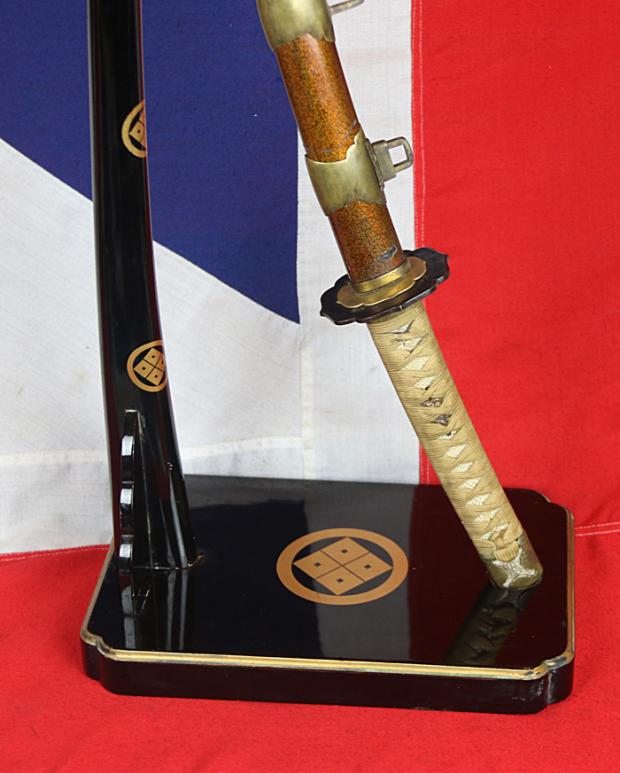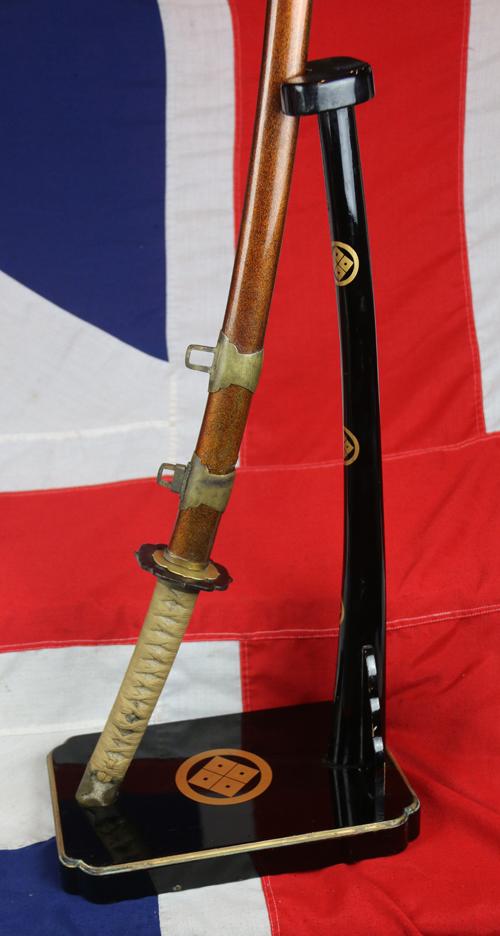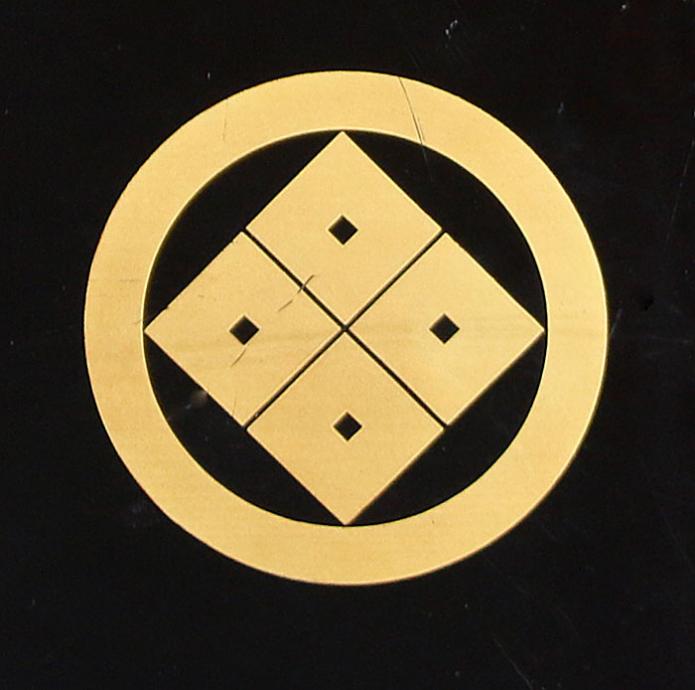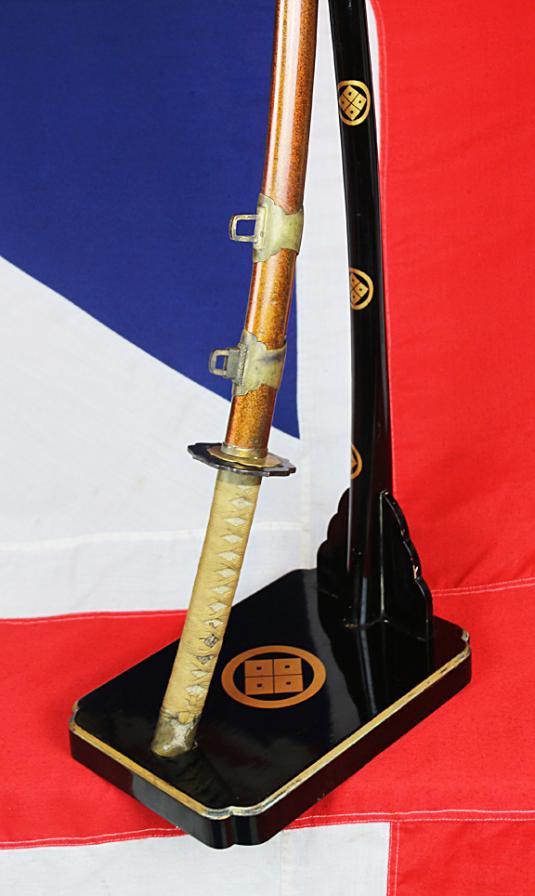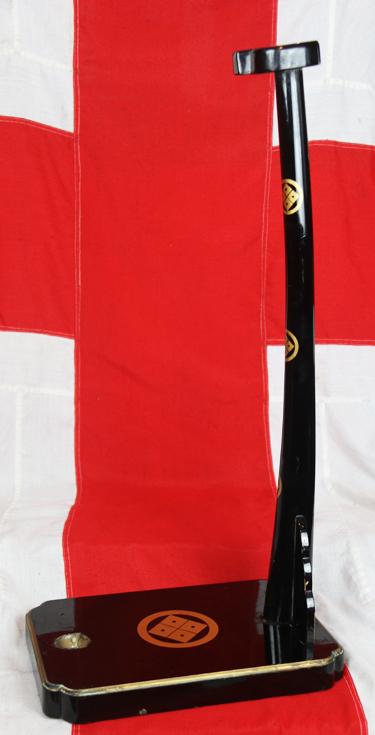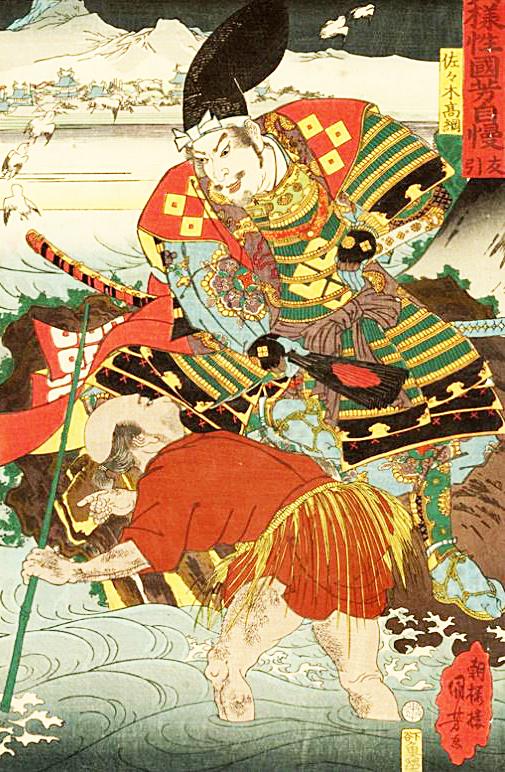A Stunning & Beautiful Edo Period Tachi-kake, Japanese Samurai Sword Stand Okuyama Family, Descendants of the Famous Genji Clan
Finest black urushi Japanese lacquerwork, over carved wood, bearing numerous hiramaki-e gold clan "four eyes" Hakkoryu kamon throughout. Constructed in two main pieces, that slot together for assembly, and apart, for storage and transportation in the samurai baggage train. Shown holding our 600 year old ‘golden dragon’ tachi [code number 22660] The Hakkoryu’s Yotsume-no-mon of the Okuyama clan who are descendants of the famous Genji clan (also called Minamoto). The clan was popularized in a famous Heian period romance Genji Monogatari, written by Murasaki Shikibu.
Most prominent of the Genji clan was Minamoto Yoritomo, a renowned general during the Kamakura period. During this era, the two most powerful clans were the Genji and their enemies, the Taira (also Heiko). The Taira were defeated in a fierce sea battle during the Genpei war and Minamoto Yoritomo and his descendants reigned supreme in Japan for some time.
The type of mon (crest) used in Hakkoryu was used by a retainer of the Minamoto clan and is commonly known as Meyui, after the concept of tie-dying. The particular style of the Hakkoryu mon is commonly known as Yotsume (“four eyes”). The significance of the crest is related primarily to the ancestors of the Okuyama family. However, the geometric design of eight squares related directly to the number eight of Hakkoryu* and the four eyes denotes preparedness for attack from all directions. There is also a superstition attached to Yotsume, as the “four eyes” guard against evil. This idea has been extended to include personal protection as in the case of Hakkoryu. The tachikake sword stand displayed the sword in a standing upright position, as opposed to the katanakake horizontal position. The vertical meant only one sword could be held, the horizontal two or several. The vertical tachikake makes a more impressive centrepiece display today, but when originally made if stood on the floor immediately next to the samurai's bed roll, the sword could be grabbed in an instant by a recumbant sleeping samurai if alerted to imminent danger. The Edo period (1603–1868) saw an increase in the focused cultivation of lacquer trees for urushi, and the development of the techniques used. In the 18th century coloured lacquers came into wider use. With the development of economy and culture, and the artistic quality of lacquered furniture improved. Hon'ami Kōetsu and Ogata Kōrin brought the designs of the Rinpa school of painting into lacquerware. After the middle of the Edo period, Inro [box containers worn from the samuria's obi hung by cords] became popular as men's accessories, and wealthy merchants of the chōnin class and samurai class collected inro of the highest aesthetic value, most precisely designed with urushi lacquer. Marie Antoinette and Maria Theresa were known collectors of fine Japanese lacquerware and their collections are exhibited in the Louvre and the Palace of Versailles. During this period, due to the development of the economy, shishiai-togidashi maki-e, an advanced technique, became popular. Small areas of natural age wear markings.
Code: 23511
3450.00 GBP


